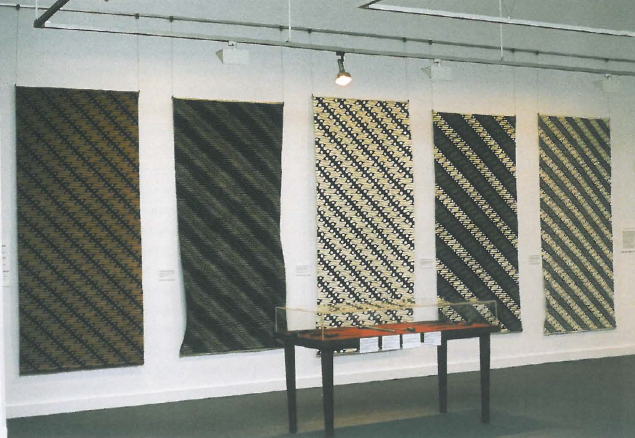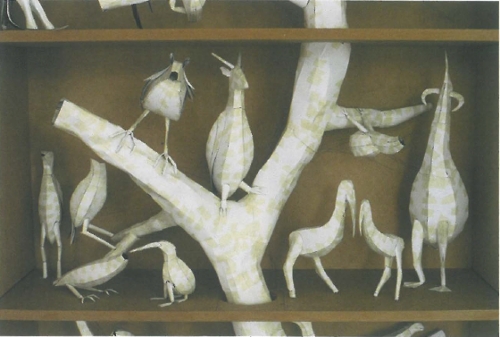
The exhibition Batik and Kris: Duality of the Javanese Cosmos raises important curatorial questions about the presentation of artworks and cultural material in a classic, Western gallery setting. Can the artists' original intention be upheld and conveyed in this environment? Is an object compromised when displayed in a manner contrary to its original function? Does a textile intended for draping on a human body become something else once it is stitched, mounted and hung upon a high, flat and usually white wall? Further complications arise when the artworks in question are Javanese material culture, without counterparts in the Western art tradition, requiring cross-cultural interpretation. (By now you may be wondering 'What is a kris anyway?' &it's a traditional metal dagger used since the 14th century in Java, where they are still made today).
Batik and Kris: Duality of the Javanese Cosmos successfully navigated the fine line in response to these dilemmas. Firstly, the concept of duality, paramount in the Javanese world-view, provided a solid framework for the exhibition. Batik textiles were presented as feminine, soft, pliable manifestations of the inner realms while metallic kris represent the hard, fixed, masculine, outer aspect of the universe. Though the exhibition was predominantly textiles; thirty-nine textiles with twelve kris, it reinforced the concept that these two opposing forms operate in partnership to create balance in the universe.
Another strength of the exhibition was the interplay between the objects and the interpretive material conveying the intricacies and layered symbolism of the artworks. Forming an impressive wall of kain panjang, literally meaning 'long cloths' from the central courts of Java were five batik versions of the parang rusak design. Steeped in the rich earthy hues of natural soga dyes, indicative of central Java, this series provided insight into each court's adaptation of the same design, yet ultimately each cloth was visually distinctive. However, the interpretive material explained that the rhomb element in this parang design is imbued with magical power, making the design suitable for aristocratic people only. Nonetheless, the rhomb form in the fifth kain panjang had been graphically 'sliced' with two parallel lines, thus dissipating its power creating a version of the parang design suitable for use by commoners. In this instance the visual language of the textiles needed to be decoded in order to fully appreciate the cultural symbolism in each cloth and to elucidate the larger story the five textiles told when hung together.
The exhibition unfolded emphasising aspects of regional style, production technique, form and function enabling the textiles to be seen from contrasting perspectives. One series of intricate women's sarongs, made in Chinese batik workshops along Java's north coast, eloquently conveyed a variety of ethnic identities and aesthetic preferences of women in this region. From the European inspired fairytale of Little Red Riding Hood to colourful floral bouquets, these sarongs bespoke the lives of the Dutch, Chinese and Euro-Asian women who made or wore them. Alternatively a series of three Islamic inspired textiles demonstrated the technical virtuosity of batik art. All were executed using the complex latar putih technique, a form of reverse batik whereby fine lines of the design are created by placing wax on the background.
The scale of the kris and their accompanying sheaths provided a focussed counterpoint to the impressive textiles. In two glass cabinets these alluring objects commanded close inspection. Gleaming organic pamor designs forged into the blades were decorated with carved and bejewelled handles. Various kris with straight blades (known as 'meditating serpent') and others with undulating blades (known as 'walking serpent') were shown.
The aesthetic magnificence of the kris and textiles exhibited in Batik and Kris: Duality of the Javanese Cosmos ensured satisfying viewing for the most discerning audience. However, the exhibition strove for more and successfully enabled audiences to appreciate the richly nuanced cultural language that these artworks embody, making Batik and Kris: Duality of the Javanese Cosmos, a resoundingly resonant and informative exhibition.












